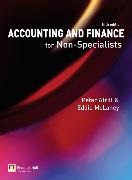Ulteriori informazioni
1. Introduction to accounting and finance Introduction Learning objectives What are accounting and finance? Accounting and user needs Not-for-rofit organisations Accounting as a service function The threshhold of materiality Costs and benefits of accounting information Accounting as an information system Planning and control Management and financial accounting Has accounting become too interesting? Why do I need to know anything about accounting and finance? Business objectives Summary Key terms Further reading Review questions 2. Measuring and reporting financial position Introduction Learning objectives The major financial statements - an overview The balance sheet The effect of trading operations on the balance sheet The classification of assets The classification of claims Balance sheet formats The balance sheet as a position at a point in time Accounting conventions and the balance sheet Accounting for goodwill and product brands The basis of valuation of assets on the balance sheet Interepting the balance sheet Summary Key terms Further reading Review questions 3. Measuring and reporting financial performance Introduction Learning objectives The income statement (profit and loss account) Relationship between the income statement and the balance sheet The format of the income statement The income statement - some further aspects Profit measurement and the recognition of revenue Profit measurement and the recognition of expenses Profit measurement and the calculation of depreciation Profit measurement and inventory costing methods Profit measurement and the probem of bad or doubtful debts Interpreting the income statement Summary Key terms Further reading Review questions 4. Accounting for limited companies Introduction Learning objectives Generating wealth through limited companies Managing a company - corporate governance and the role of directors Financing limited companies Raising share capital Loans and other sources of finance Restriction on the right of shareholders to make drawings of capital Accounting for limited companies The directors' duty to account The need for accounting rules The main sources of accounting rules Directors report Auditors Accounting rules and the quality of financial statements Summary Key terms Further reading Review questions 5. Measuring and reporting cash flows Introduction Learning objectives The cash flow statement Preparing the cash flow statement What does the cash flow statement tell us? Summary Key terms Further reading Review questions 6. Analysing and interpreting financial statements Introduction Learning objectives Financial ratios Financial ratio classifications The need for comparison Calculating the ratios A brief overview Profitability Efficiency The relationship between profitability and efficiency Liquidity Gearing Investment ratios Trend analysis Ratios and prediction models Limitations of ratio analysis Summary

